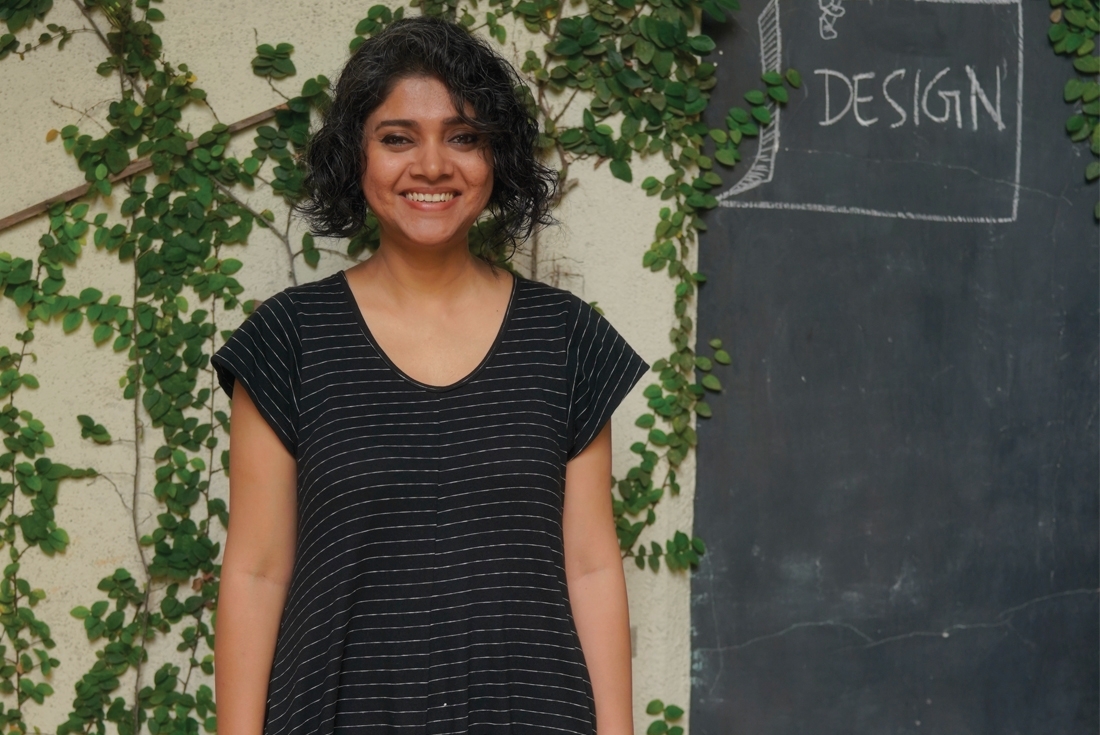
Photography by Kartik Vijay

Photography by Kartik Vijay
Can you take me through your journey in design over the years?
I studied Graphic Design at NID, chose to work with print and tried my hand at everything from newspaper design, exhibitions and identities, to books and magazines. I love the printing process: the smell of paper and printing inks at the press, and watching images form with each impression of the fourcolour process. I worked at Steidl Verlag in Germany where I experienced the best of collaborative design and fine printing, and ever since I’ve been known as a book designer. But I’d call myself a graphic designer really. At my studio, Letterpress, I work on all kinds of print-related projects.
What inspires your design aesthetic?
My design aesthetic probably has a bit to do with my nature: excess and fuss make me uncomfortable. My instinct, always, is to pare things down to the clearest, tidiest unit. Also, text matters a great deal to me: I read all the material I receive and mull over obscure things like the height of the en-dash from the baseline. It’s not the kind of thing anyone will notice though it could make all the difference to the act of reading. I have been lucky to have brilliant teachers: Mahendra Patel, Aurobind Patel, Itu Chaudhuri, Gerhard Steidl and his team, to name just a few. It’s because of them I have this way of working.
Tell me about some of the books, publications, magazines, galleries and artists that have had a significant impact on you as you worked on, or with, them.
Early in my life as a designer, I spent a month documenting the crafts of Chhattisgarh for The Handbook of Handicrafts. It opened my eyes to the brilliance of the Indian craftsperson: their use of local materials and how they seamlessly blend in functionality with stories. A memorable project at Steidl was a book I made with John Cohen: a musician himself, Cohen had a large archive of photographs he had made of Bob Dylan and other musicians of the 60s. It was incredible to edit with him and listen to first hand stories of Woody Guthrie, Pete Seeger, Jerry Garcia, Bob Dylan and others; all friends of Cohen’s. Then, working on a book with Dayanita Singh is like practising a raga: we go up and down the page and the book till a subliminal meaning is arrived at.
Is art design and design, art? How do you view the relationship between the two, and between the medium of Print?
Design as a socially responsible job [and not garnish], has a clear mandate to communicate and solve ambiguous problems; to make things work. Art is a bit harder to pin down: unlike in design, usability and functionality are not central to art. It encompasses a vast gamut of human expression. Yet, for hands-on practitioners of any discipline, one must have the ability to see things in detail and from afar, and then work things out within a context.
Take us behind the ground scenario of book designing in the country—how far have we come and how far are we yet to go?
Book design is a unique process because it is often a collaboration between an artist and a designer. It’s a bit like the composer who writes the music and the conductor who interprets it and gives it shape. It’s usually a long and expensive but rewarding process. Though we don’t come close to producing the number of high quality books that we see in, say, Japan or Germany, I was led to so many different practices around books when I curated a show on books at Chatterjee and Lal last year. It was evident that there is a tremendous interest in books. And contrary to what our preoccupation with smartphones may lead us to believe, there are significant numbers who like to look, read, touch and feel books.
What are the biggest challenges of your profession, and what, according to you, is the biggest need of the hour?
We live in an age of inequalities and diminishing resources. As designers we need to not only create awareness and effect social change, we also need to stop contributing to mindless consumption. Sustainability and responsibility have to be a part of design practice.
What are you currently working on and what is next?
I am working on a book of a large Indian art collection outside the country and other print-related projects. I want to simultaneously focus on self-motivated projects. The areas that interest me are storytelling and education. A short story of mine in collaboration with Nityan Unnikrishnan was recently published in a graphic novel anthology and I am writing more. I am also keen to explore design education for children: I’d like to design short modules for local schools with a focus on material culture and local skills.
Text Soumya Mukerji